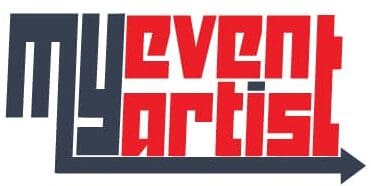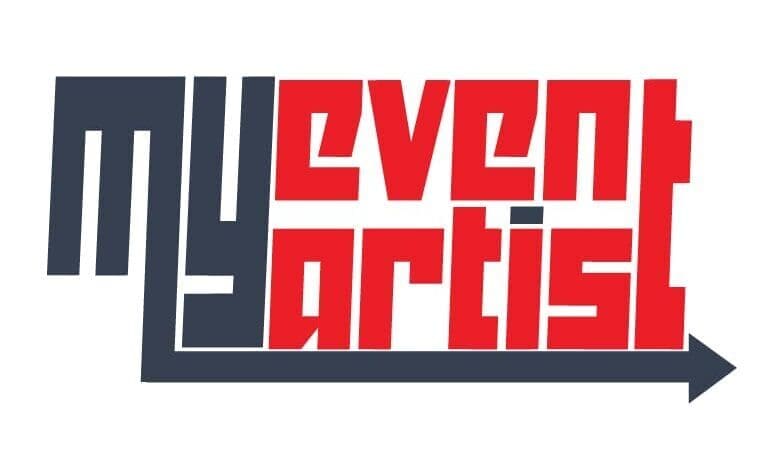When it comes to creating compelling sports logos, patterns and textures can be powerful tools in your design toolkit. They add depth, interest, and personality, helping your logos stand out in a competitive landscape. Utilizing patterns and textures in Adobe Illustrator can turn a simple design into something truly memorable.
At My Event Artist, we specialize in developing distinctive logos for sports teams and events, and we understand the impact that well-implemented patterns and textures can have on branding. This guide will walk you through the techniques and best practices for using patterns and textures to elevate your sports logos in Illustrator.
Why Use Patterns and Textures in Logo Design?
1. Adding Depth and Dimension
Textures can give your logos a three-dimensional effect, making them more visually engaging. When used effectively, they can create a sense of realism that sets your design apart.
2. Enhancing Brand Identity
Patterns and textures can reflect the brand’s personality and message. For instance, a basketball team might use a textured background to mimic the look and feel of a basketball court, while an outdoor team might incorporate earthy textures to reflect nature.
3. Creating Visual Interest
Incorporating patterns enhances the overall aesthetics of your logo. They can break up solid colors and add complexity, helping to draw the viewer’s eye and increase engagement.
4. Versatility Across Media
Patterns can provide flexibility in design applications. Whether printed on apparel, merchandise, or displayed digitally, they make logos versatile and adaptable to various contexts.
Step-by-Step Guide to Using Patterns and Textures in Sports Logos
Step 1: Initial Logo Design Setup
Before adding patterns and textures, start with a solid logo design foundation:
- Open Adobe Illustrator: Launch the software and create a new document (File > New). Set your artboard to an appropriate size, such as 1000 x 1000 pixels for your logo design.
- Design Your Logo: Use the Shape Tool and Pen Tool (P) to create the basic elements of your logo, focusing on clarity and simplicity.
Step 2: Research and Choose Patterns and Textures
Consider the context of your team or event when selecting patterns and textures:
- Explore Pattern Libraries: Illustrator comes with pre-installed patterns. Access these by going to Window > Swatch Libraries > Patterns. Browse through categories that fit your theme or brand identity.
- Choose or Create Custom Patterns: Upload your own patterns, create custom ones, or combine different shapes and elements to develop a unique design that resonates with your brand.
Step 3: Applying Patterns to Your Logo
Once you have your logo elements and patterns ready, you can start applying them:
- Select the Element: Use the Selection Tool (V) to choose the part of your logo where you want to apply the pattern.
- Apply a Pattern: With your logo element selected, navigate to the Swatches panel and click on the desired pattern swatch. This applies the pattern as a fill to your selected shape.
Step 4: Adjusting Pattern Size and Placement
Sometimes the default size of a pattern may not suit your design:
- Scale the Pattern: To adjust the pattern size, go to Object > Pattern > Edit Pattern. Here, you can manipulate the scale, spacing, and arrangement of the pattern.
- Reposition the Pattern: Use the Transform Tool (by selecting the object and holding down the Alt key while dragging) to reposition the pattern within the shape if necessary.
Step 5: Layering Textures
Textures can be added to enhance the look of your logo:
- Choose a Texture: You can download textures from online resources or create your own by scanning materials or images.
- Import the Texture: Place the texture image into your Illustrator document (File > Place). Ensure it is in high resolution for the best quality.
- Apply the Texture: Position the texture over the area of your logo where you want to apply it, then select both the logo element and the texture.
- Create a Clipping Mask: Right-click on the selected elements, and choose Make Clipping Mask to apply the texture only to the part of your logo that you want.
Step 6: Fine-tuning Your Design
Once you have applied your patterns and textures, refine your logo for a polished look:
- Adjust Opacity: Select the texture or pattern and adjust the opacity in the Transparency panel (Window > Transparency). Lowering the opacity can create a more subtle effect.
- Experiment with Blending Modes: In the Transparency panel, explore different blending modes (e.g., Multiply, Overlay, Soft Light) to see how the texture interacts with the colors of your logo. This can create unique effects and integrate the texture and logo more seamlessly.
Step 7: Testing Your Logo Across Applications
Test your logo to ensure it performs well across various mediums:
- Mock-Up Applications: Use mock-up templates to see how the logo appears on different products, like jerseys, hats, or promotional materials.
- Evaluate Visibility: Check that the patterns and textures are recognizable and do not detract from the overall brand visibility, especially at smaller sizes.
Step 8: Save and Export Your Logo
Once you’re satisfied with your design:
- Save Your Work: Always save your Illustrator file in AI format (File > Save As) for future editing.
- Export Your Logo: Export your logo in various formats based on your needs:
- SVG for web use to maintain scalability.
- PNG with a transparent background for versatile applications.
- PDF or EPS for printing to ensure high quality.
Best Practices for Using Patterns and Textures
1. Be Mindful of Brand Identity
Ensure that the selected patterns and textures align with your brand’s personality and values. They should enhance, not overwhelm, the message you want to convey.
2. Maintain Balance
While patterns and textures can add richness, be mindful not to clutter your design. Ensure that they complement your logo’s elements without overpowering them.
3. Test for Print Compatibility
Before finalizing your logo, always check how patterns and textures will look when printed. Colors and designs may shift during the printing process, so it’s crucial to conduct tests if possible.
4. Use Subtle Textures for Professional Appeal
If you opt for textures, consider using subtle ones that add depth without distracting from the logo itself. Less is often more in design.
5. Seek Feedback
Before finalizing your logo, get feedback from peers, team members, or potential customers. Constructive criticism can reveal areas for improvement.
Conclusion: Elevate Your Sports Logos with Patterns and Textures in Illustrator
Using patterns and textures in your sports logo design can significantly enhance its visual impact, creating a memorable and distinctive identity for your brand. With Adobe Illustrator’s versatile tools, you can experiment with various designs that resonate with your target audience while effectively representing your team or event.
At My Event Artist, we are passionate about helping sports teams and events create visually striking logos that reflect their identity. Explore our extensive collection of print-ready vector logo designs, customizable fonts, and more by visiting My Event Artist Shop. If you’re interested in a custom logo design tailored specifically for your event or team, feel free to reach out today!
Keywords: patterns, textures, sports logos, Adobe Illustrator, graphic design, branding
#patterns, #textures, #sportslogos, #AdobeIllustrator, #graphicdesign, #branding



Leave a Reply